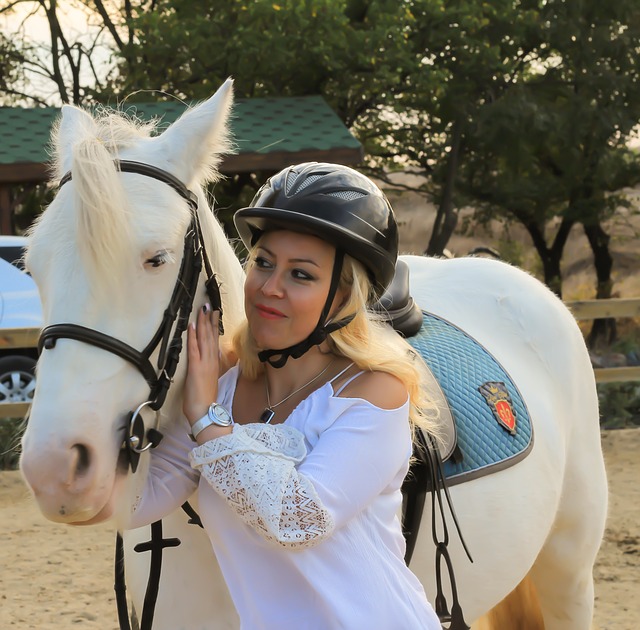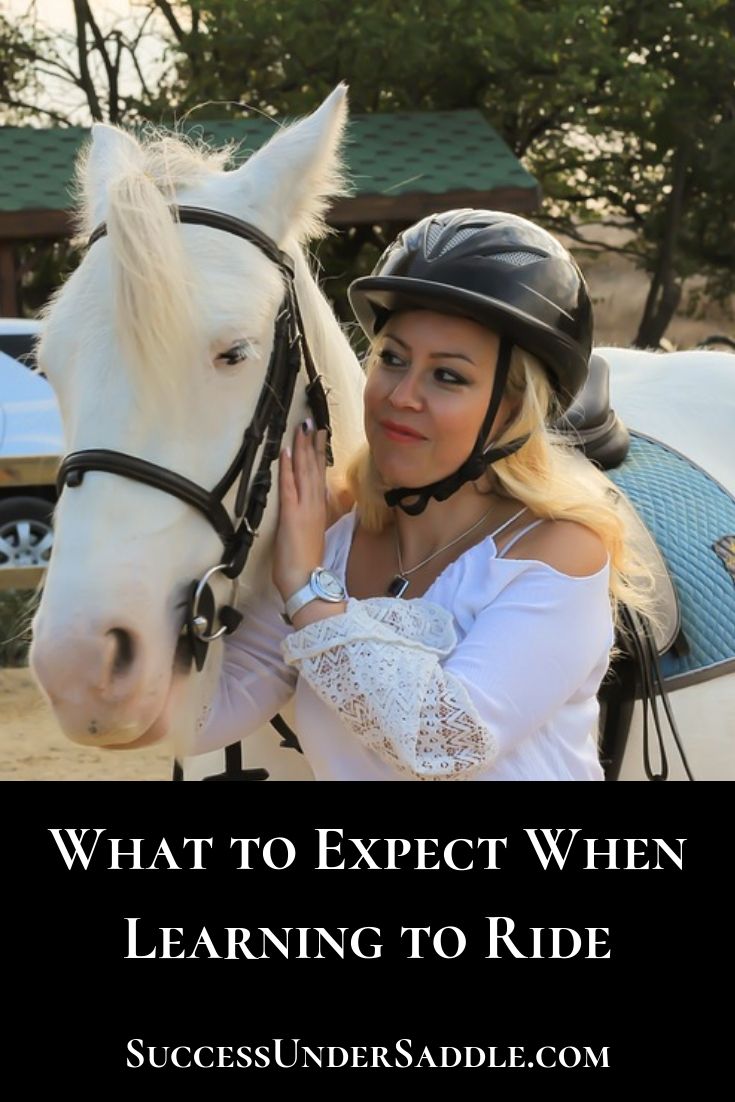This post may contain affiliate links. Please read our disclosure for more info.
If learning to horseback ride has been on your bucket list for a long time, now is the time to check it out! Can you learn to ride at any age? Of course you can!. Although many people start to learn as kids, you can learn to ride horses at any age. Perhaps you rode in your youth, now you have the time and the funds to pursue it more deliberately!
Tip #1 – Decide on What Style of Riding to Pursue
Although most of the basics in regard to mounting, dismounting, sitting and controlling the horse are similar across all disciplines, you may want to get a general idea about your interests before booking your first lesson. Do you want to ride English or Western? Within the different styles of riding, there are multitudes of different activities that you can pursue.
What are the options within the different styles? You Tube is a great way to explore and research different options when it comes to figuring out your interests. Are you interested in the beauty and precision of a sport like Dressage? Or is the western version of the sport, Reining, more to your liking? Perhaps you’re a bit of a speed demon and Barrel Racing or other rodeo events appeal to you. Do you want to mosey down a trail? Maybe you want to guide your horse gracefully over a course of jumps. Have fun exploring the options!
Tip # 2 – Find a Good Riding Instructor
When you’re first learning the basics, you should be able to find a good riding instructor close to home. I wrote an entire blog post on what to look for in a good riding instructor or trainer that you can check out here. Keep in mind that you can always change instructors, and may want to, as you progress with your riding and fine tune what types of activities you’d like to participate in.
What to expect with your first riding lesson
If you’ve never ridden before or your only experience with riding horses was a trail ride in Belize on your honeymoon, there are a few things that you and the instructor will want to know prior to your arrival:
Questions to ask when you book your first lesson:
- Will the class be a solo session or a group class?
- How long is the lesson?
- What is the expense for the class?
- Do they provide a helmet for you?
- What level of knowledge are you expected to have upon arrival?
- Do you get a discount for buying multiple sessions rather than just one?
What to wear for your first lesson
It is not necessary to go out and buy a whole new wardrobe (yet) for your first lesson. I always wear jeans when I ride, and most riders in Western sports do. However, your instructor may advise you to wear pants that are soft. The less slippery the better, but anything that is comfortable and won’t rub is a good start.
Your footwear is important too. Wear a pair of shoes with a heel of an inch or so, if possible. Lots of everyday ankle boots for both men and women would meet this requirement nowadays. This is to prevent your feet slipping through the stirrups.
If a helmet is required and not supplied, you will want to purchase one. Most instructors these days do require one. The helmet below is a great choice if you are looking to purchase one.
Troxel Sport Schooling Riding Safety Helmet SEI Certification
Here is a list of tasks you can expect to learn in your first few lessons:
1. How to lead the horse
As a beginner, you will learn how to put a halter on your horse and use a lead-rope. Learning to lead a horse is an important part learning to work with horses. Learning to lead your horse will improve your ability to control the horses’ movements and improve your communication with the horse on the ground and while saddled.
2. How to groom the horse
At the beginning or end of the lesson, the instructor will have you clean and groom the horse. You will learn about the different types of brushes and how to use them. Different types of bushes, such as the dandy brush and curry comb, are used on different areas of the horse’s body. The mane and tail require a different brush than the body and face. You’ll also learn how to pick a horse’s hooves.
3. How to put tack on the horse
Tack generally refers to a variety of accessories worn by the horse. Depending on the horse, you will most likely learn to saddle and bridle your assigned horse. Knowing how to properly put tack on your horse will ensure that you and the horse are both comfortable. Additionally, putting the horse’s tack on correctly is essential for safety. You will also learn how to properly take the tack off. You may also learn how to clean and care for the tack.
4. How to stop and start the horse
You will learn how to stop and start the horse both on the ground and on horseback. On the ground, stopping the horse will include verbal and physical cues. Once on horseback, you will use the reins to control the horse’s movement in addition to other physical and verbal cues.
5. How to mount the horse
Proper mounting technique may vary somewhat with the different English and Western styles of riding. Many beginners struggle to mount on the first time. With practice, you’ll build up strength and master the mounting technique for your riding style.
6. How to ride at a walk
Now that you’ve established communication with the horse and know how to mount the horse, you’re ready to ride! You will begin at a walk and practice walking in a circle around an enclosed arena. Some instructors may use a “lunge line” for your first lessons. Riding at a walk is a great opportunity for riders to learn how to direct their and control their horse around bends and corners of the arena.
As you progress in your riding, your instructor will teach you to ride other gaits with your horse including:
7. How to ride a sitting trot
Learning to trot is an exciting step for a beginning rider and can also be one of the most frustrating tasks as learning to sit the trot without bouncing all over the saddle can be a challenge. The ability to trot indicates that the rider has learned to communicate with the horse and feels comfortable in the saddle.
8. How to do a posting trot
The movement from a seated to standing position it called posting. The posting trot is not usually taught in Western disciplines, however, it is a useful skill to have as you progress in your riding and move up to more challenging horses.
Once you’ve mastered these beginner skills, you’ll move onto intermediate skills such cantering or loping.
Tip #3 – Be patient with yourself
The key to learning to ride a horse is to be patient while mastering the basics. It’s natural to be nervous! Taking your time as a beginner is essential in order to become a well-trained and safe rider and provides a good foundation for more advanced, discipline centered riding. Developing confidence comes with time. For tips on developing confidence while riding click here.
Tip # 4 – Expect sore muscles at first
Regular stretching of the affected muscles can help to keep them flexible. Strengthening your “Core” will also help with sore muscles and will help improve your riding. For more information on Strengthening your Core can be found here.
Tip # 5 – Enjoy Meeting New People
Learning to ride is a great place for making new friends and connecting with others. For many of us, interacting with fellow horse lovers is an essential part of our experience with horses.
I hope that you found this article helpful. I’d love to know where you are with your riding experience! If you are looking for your first horse or your next dream horse, then you will want to get my free Dream Horse Buyer’s Guide! Its full of everything you need to know to narrow your search and select your next equine partner. Get it today! Click the link below!
Get Out There and Enjoy the Ride!



